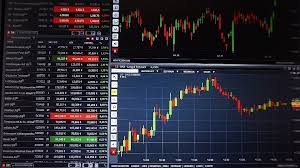
The Ultimate Guide to Forex Trading
Forex trading, or foreign exchange trading, is the global market where currencies are bought and sold. It operates 24 hours a day, five days a week, making it the most accessible and liquid financial market in the world. Understanding the basics of Forex trading is essential for anyone looking to enter this dynamic and potentially lucrative field. In this article, we’ll explore various strategies, tips, and insights to help you navigate the Forex market effectively. To further enhance your trading experience, consider checking out forex trading acev.io, a platform dedicated to providing essential tools for traders.
Understanding Forex Trading
To grasp the essentials of Forex trading, one must understand key concepts such as currency pairs, pips, and leverage. Currency pairs are the foundation of Forex trading; they represent the value of one currency against another. For instance, in the EUR/USD pair, the Euro is the base currency, while the US Dollar is the quote currency. This means if the pair is valued at 1.20, it takes 1.20 US Dollars to buy one Euro.
Pips, or “percentage in point,” are units of measurement used to indicate the change in value between two currencies. Most currency pairs are quoted to four decimal places, where a movement from 1.2000 to 1.2001 represents a change of one pip. Leverage is another critical aspect of Forex trading, allowing traders to control larger positions with a smaller amount of capital. While leverage can amplify profits, it also increases risks, making it crucial to use it wisely.
Choosing a Trading Strategy
Success in Forex trading often depends on the trading strategy employed. Several strategies cater to different trading styles, timeframes, and levels of risk tolerance. Here are a few popular trading strategies:
1. Scalping
Scalping is a short-term trading strategy that involves making numerous trades throughout the day to capitalize on small price movements. Scalpers typically hold positions for a few seconds to a couple of minutes. This strategy requires a deep understanding of market conditions and a reliable trading platform to execute orders swiftly.
2. Day Trading
Day trading involves opening and closing positions within the same trading day to avoid overnight risks. Day traders analyze market trends and price movements to make quick decisions. This strategy can be quite intense and requires a significant time commitment.

3. Swing Trading
Swing trading entails holding positions for several days or weeks to capture short-to-medium-term market movements. Swing traders often use technical analysis to identify potential entry and exit points. This strategy allows for more flexibility compared to scalping or day trading, making it suitable for individuals with other commitments.
4. Position Trading
Position trading is a long-term strategy that involves holding positions for weeks, months, or even years. Position traders focus on fundamental analysis, analyzing economic data and market trends to make informed decisions. This strategy requires patience and a strong understanding of the broader economic landscape.
Essential Tools and Resources
To succeed in Forex trading, traders must be equipped with the right tools and resources. Here are some essential tools that can aid your trading journey:
1. Trading Platforms
A reliable trading platform is crucial for executing trades, managing accounts, and accessing market data. Popular platforms include MetaTrader 4, MetaTrader 5, and cTrader. These platforms offer advanced charting tools, technical indicators, and automated trading capabilities.
2. Economic Calendars
Economic calendars provide important information regarding upcoming economic releases and events that could impact the Forex market. Keeping track of these events is essential for staying informed about potential market-moving news, allowing traders to plan their strategies accordingly.
3. Technical Analysis Tools
Technical analysis tools, such as chart patterns and indicators, help traders identify trends and potential entry or exit points. Understanding how to read charts and utilize technical indicators like Moving Averages, Bollinger Bands, and the Relative Strength Index (RSI) is vital for effective trading.

Managing Risk in Forex Trading
Risk management is critical to long-term success in Forex trading. Traders must learn how to protect their capital while maximizing potential profits. Here are some key risk management strategies:
1. Set Stop Losses
Stop-loss orders automatically close a trade once a specific price level is reached, limiting potential losses. It is essential to set stop-loss orders for every trade to protect your capital from unforeseen market movements.
2. Use Proper Position Sizing
Position sizing refers to determining how much capital to allocate to a particular trade. A general rule of thumb is to risk no more than 1-2% of your trading capital on a single trade. This strategy helps protect your account during losing streaks.
3. Diversification
Diversifying your trades across different currency pairs can help mitigate risk. By not putting all your capital into one trade or one currency pair, you spread your risk and reduce the impact of a single loss.
Continuous Learning and Adaptation
The Forex market is constantly evolving, and successful traders must commit to continuous learning. Stay updated on economic news, geopolitical events, and market trends that could influence currency values. Joining trading communities, attending webinars, and reading books on Forex trading can enhance your understanding and keep your skills sharp.
Conclusion
Forex trading can be a rewarding and exciting venture when approached with the right knowledge, tools, and strategies. Understanding the basics of currency pairs, pips, and leverage, combined with a solid trading strategy and risk management plan, lays the foundation for success in the Forex market. Remember, practice makes perfect, so consider using a demo account to hone your skills before trading with real money. As you navigate this intricate world, platforms like acev.io can provide valuable resources to help you along the way.
